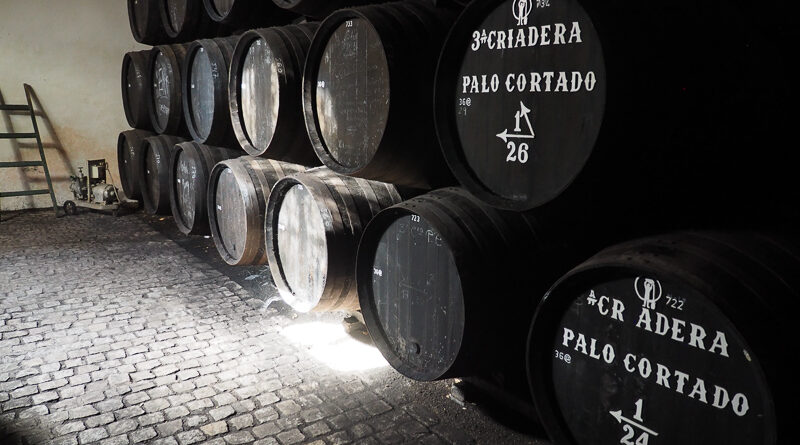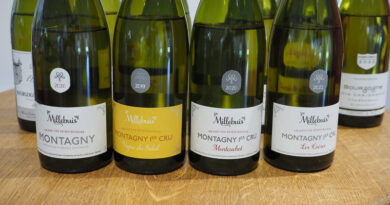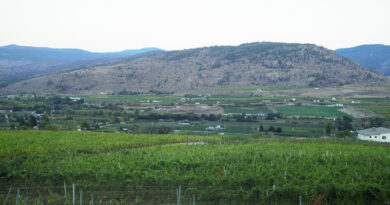Bodegas Tradicion: visiting one of the best Sherry producers of all
Website: Bodegas Tradicion
There are a number of threads to the story of sherry today. We have big sherry: the companies that make large volumes of well-priced sherries that are often surprisingly good for the money, but where a disconnect has occurred between the vineyard and the winery. Then we have the new ‘back to the future’ movement, where small producers are going back to the vineyard and looking at how sherry was made in its glory years in the 19th century when it very much was a terroir-based wine (think Willy Perez and Ramiro Ibanez). And then we have the revival in high quality bodega sherry, where great sherries are made through meticulous selection of old wines, and careful curation of stocks with skilful blending – think Equipo Navajos and also the subject of this profile, Bodegas Tradicion.
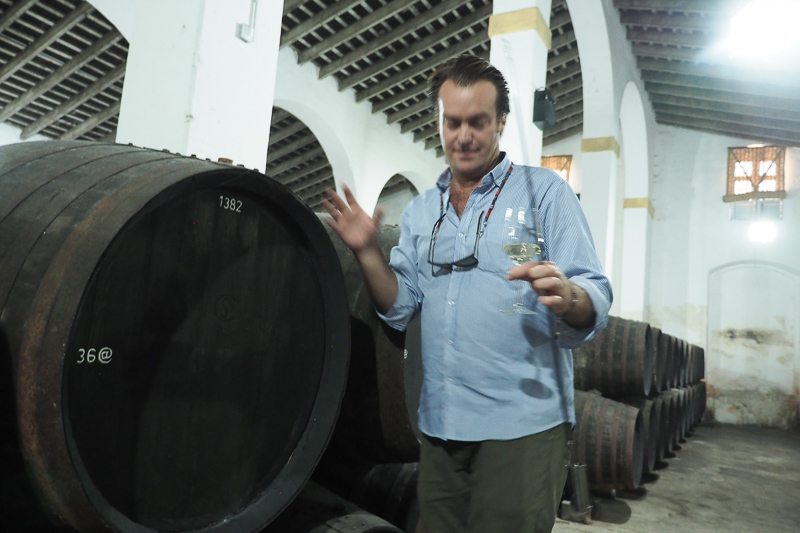
I visited Tradicion with Eduardo Davis, who is in charge of sales. ‘The next 20 years for Jerez are going to be very exciting,’ says Eduardo Davis of Bodega Tradicion, who are one of the most respected producers of long-aged Sherries. ‘Something for the connoisseurs and like good wines, and not for the masses.’
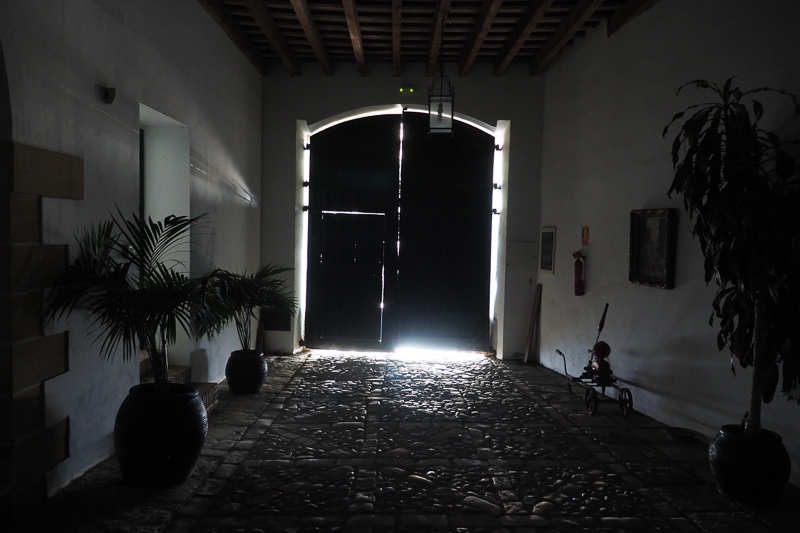
But Davis adds a note of caution: fixing things at the high-end doesn’t change everything at the bottom, where the volume still lies. The region is still making money from selling wine for distillation and producing barrels for the whisky companies. ‘The market tendency is drinking less but better,’ says Davis. ‘But I don’t think the big guys in Jerez are looking at those numbers yet.’ Some of them are going back to the vineyard, but often this is just a token so they can be in the same movement as the guys doing the real thing. He adds, ‘the pressure is in the vineyard from the grower side: 7000 hectares that need to be kept alive. You can’t do that just with premium wines. You still need to sell to young people that don’t know the story and they need to start with the entry level.’
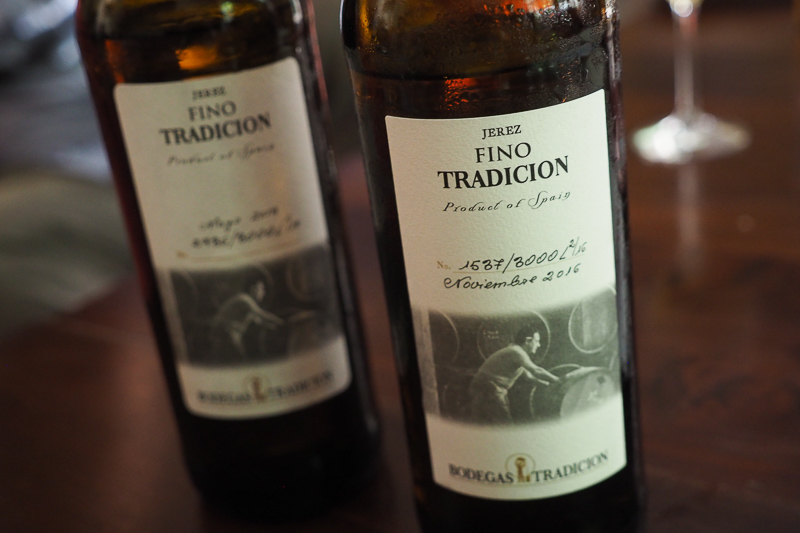
We tasted through some of the wines in the cellar, beginning with a 2018 Sobretable from Balbaina. It was fruity and supple with a hint of saltiness – very primary, as you might expect. This was from juice yields of 650 litres a ton, and was then fermented at 22/23 C in stainless steel, to a natural alcohol level of 12.2%, and then fortified up to 15.3%. The average alcohol in the region is 10.5-11%.
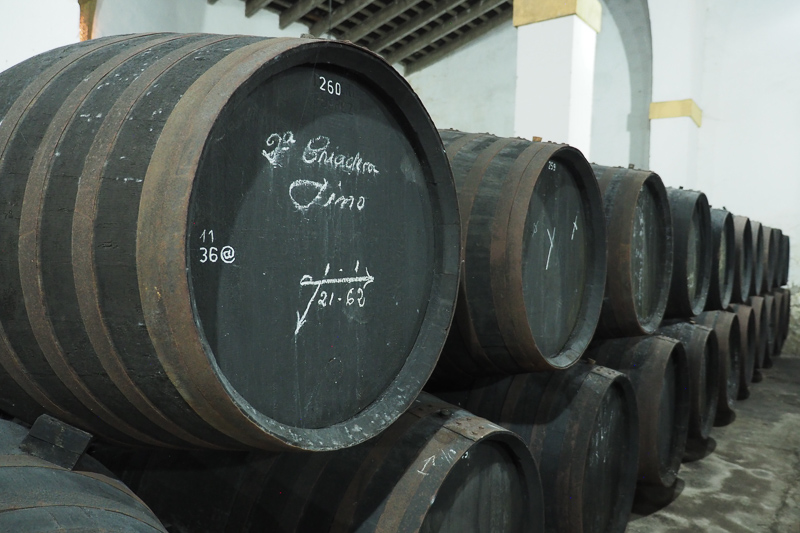
We then tasted from the 4th Criadera. This is a blend of 2015-2018 and has an average age of 1.5 years. It’s savoury, a bit salty and a bit spicy, with nice freshness. There are 62 casks in this 4th Criadera. The wine is starting to lose glycerine and to sharpen.
Then, the 2nd Criadera, which has 53 casks. This is middle aged, with an average of 5 years. It’s tangy and a bit salty with nice freshness. Has a bright citrus and pear character with some apple hints: it’s really stylish.
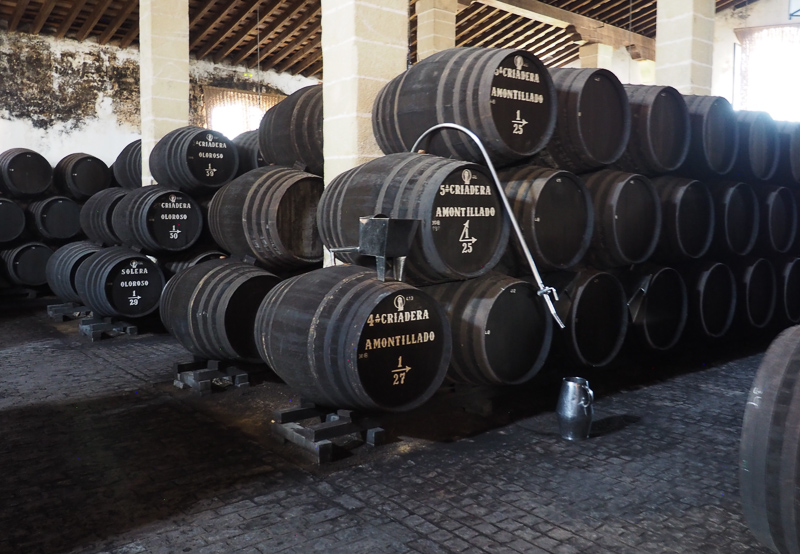
Davis explains that they are adding three casks a year to each solera, expanding slowly. They take 10% (53 litres) out of each cask each year. The youngest wine they have in the market is a 3.8 year old Fino for a private label.
Fino Tradicion (from a solerea averaging 8-10 years old): complex, tangy and intense with lovely citrus and spice. Very stylish and showing lovely intensity. ‘Each cask is a different world,’ says Davis. He says that when the barrels are stacked, the flor is much more alive in the lower levels, because it is a bit cooler here. We looked at four different bottlings of the Fino Tradicion. They differ as to whether the saca (the taking out of the sherry) occurs in spring or autumn.
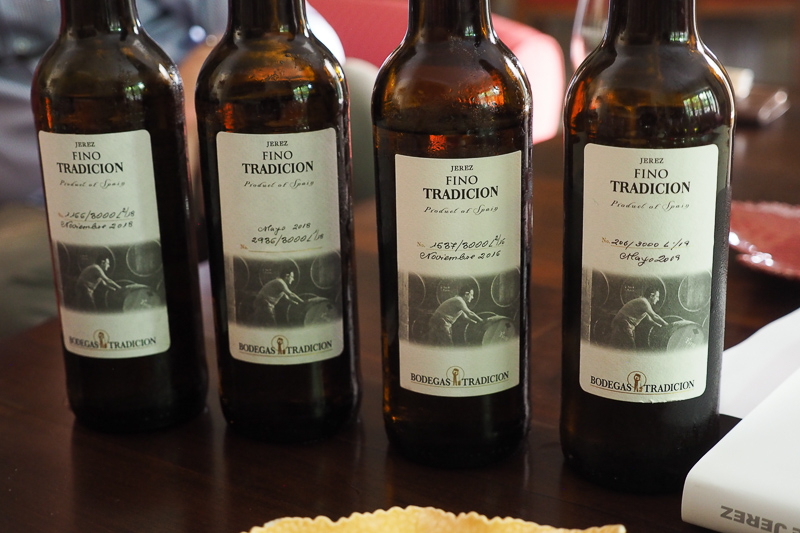
Fino Tradicion NV
(Saca May 2019) Wonderfully expressive with a bit of toast and spice. The palate is complex and has some salty notes under the pear fruit, and also some nuttiness. Has a lovely taut personality. 93/100
(Saca November 2018) This is tangy and detailed with lovely orange peel character. Tangy and citrussy with complex saline notes and real precision and weight. 95/100
(Saca May 2018) Very different again: pithy with mandarin and spice. Fresh and lively with some zip and some nutty notes. Tangy and bright. 93/100
(Saca November 2016) Complex with notes of toast, nuts and spice on the nose. Nutty and expressive with apples, pears and some spice. Tangy and salty with lovely complexity and some fine herb notes. 94/100
Then we looked at an Amontillado from the second criadera, age 32 years on average. This had notes of old furniture and spice with nuts and orange peel. Has real intensity with good acidity and a lot of complexity. 95/100
Then we looked at three casks from a solera with an average age of 42 years. The first is complex, nutty and very refined with a real harmony. Spicy with a touch of raisin, notes of old wood, and a spicy intensity. Intense and complex with saline notes on the finish. 96/100
The second cask has more focus and more apparent acidity, and nice intense woody notes. 97/100
The third is richer and more intense, and also quite spicy, with notes of citrus, peach and old furniture. 97/100
Then it’s time for Palo Cortado, and a 38 year year old solera. Fine, fresh, salty and tangy with real complexity and great precision. This is really complex with old cask notes and some nuttiness. Profound. 96/100
Then a younger one, a 10 year old 4th Criadera Palo Cortado. Not yet complex, this has a salty edge and a bit of nuttiness. Rounded, with a hint of barley sugar.
Oloroso next. A solera, 45 years old. This is from the oldest solera in the Tradicion winery, founded in from 1860. This is complex, spicy and woody and intense with amazing complexity. Tarry, spicy and with great acidity, this is so complex and intense. 97/100
Then a special cask: a 50-55 year old wine of astonishing complexity, concentration and depth. Vivid and fresh with tar, citrus, earth, herbs and old furniture. 98/100
Find these wines with wine-searcher.com

